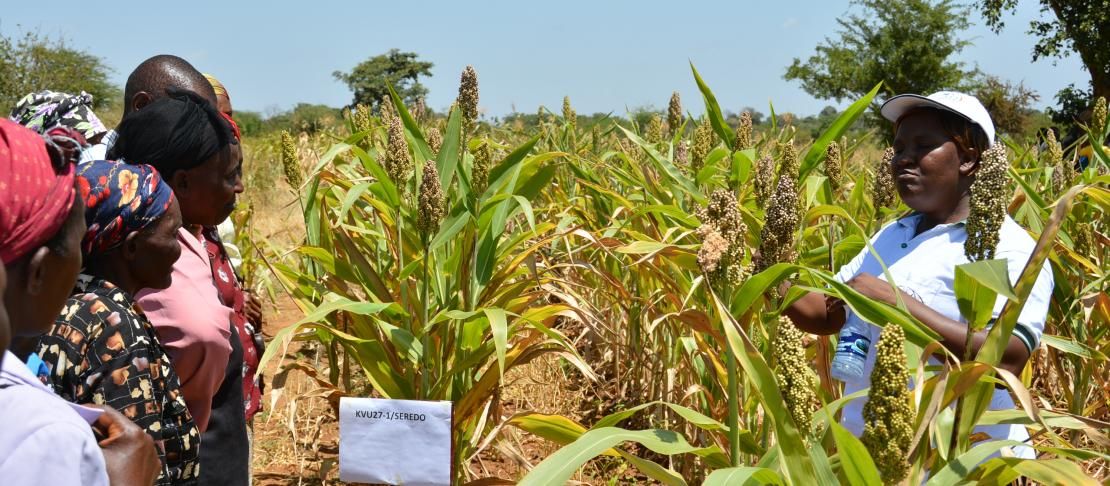Heifer International has been supporting 300,000 farming families to successfully shift from traditional livestock production methods to efficient and resilient livestock production methods aiming at improving production, health, economic return while reducing environmental impact.
Climate change and agriculture are deeply interconnected, as the changing climate patterns significantly impact agricultural practices and food production systems. One of the most evident impacts of climate change on agriculture is the disruption of traditional growing seasons leading to shifts in planting and harvesting schedules, affecting the growth and yield of crops.

A significant portion of agriculture in Nepal relies heavily on climate conditions mostly monsoon rainfall. Limited irrigation facilities exacerbate the climate dependency. Efforts to promote climate-smart practices, develop resilient crop varieties, improve water management, and provide support to farmers can enhance resilience in the agricultural sector and alleviate food security. Transitioning to climate-smart agriculture (CSA) is crucial for enhancing productivity and resilience in Nepal’s agricultural sector.
Nepal’s livestock sector is generally less climate smart and less efficient. Traditional practices, such as extensive grazing and inadequate technology adoption, contribute to reduced productivity. Insufficient focus on climate change adaptation and mitigation further hinders resilience. Efforts to promote climate- smart livestock farming, including improved breeds, efficient feeding systems, animal health management and improved shed with waste management can benefit farmers by increasing productivity while reducing environmental impact thus ensuring resilience in the livestock sector.
Heifer International has been supporting 300,000 farming families to successfully shift from traditional livestock production methods to efficient and resilient livestock production methods aiming at improving production, health, economic return while reducing environmental impact. Targeted new CSA practices included the adoption of improved animal sheds, manure management, improved animal health, vaccination, breed improvement, cultivated fodderiforage and crop residues- based feeds which enables resilient and climate smart livestock production system.

Recently Heifer International has completed a study in partnership with Alliance of Bioversity International and CIAT a CGIAR Research initiative, on Climate smart agriculture practices which highlighted the benefits of adoption of CSA practices mainly in livestock sector in context of Nepal. Farmers have successfully substituted grazing with cultivated fodder/ forage and crop residues in their livestock feed basket compared to non-Heifer supported farmers where 60-70% of feed basket still is grazing.
With high adoption of CSA interventions among the farmers, land use intensity falls by between 74-85%, water use intensity by between 87-98%, and GHG emission intensity by between 74-91%. The intensity of GHG emissions, and land and water use per kg of goat meat were lower in farms adopting the improved animal management practices compared to those following traditional methods.
Improved sheds were found to be the most effective intervention to reduce emissions intensity as it helps in manure management that can be applied in farm increasing benefits for the farmer. This is followed by improving the feed basket through the addition of improved forages and feed additives which improves digestion and increases productivity while replacing the commercial feeds and grains. Also, better results are recorded with the adoption of improved breeds that increases production per inputs and helps in reducing the number of livestock for the same amount of production and productivity.

Through the strengthening of smallholders” livestock value chain, the productivity of goat increased by 40% and per doe goat offtake has doubled resulting in an increase in actual income by 14%. The extent of fodder/forage cultivation covering 16,000 hectares of land has significantly contributed to achieving the governments Nationally Determined Contribution (NDC) target on fodder plantation in 6000 hectares. The impact of cultivated forages, feed additives and improved shed have been positively assessed contributing to reduction in emission intensity by, respectively, 40%, 50% and 70%.
** Click here to read the full-text **
















